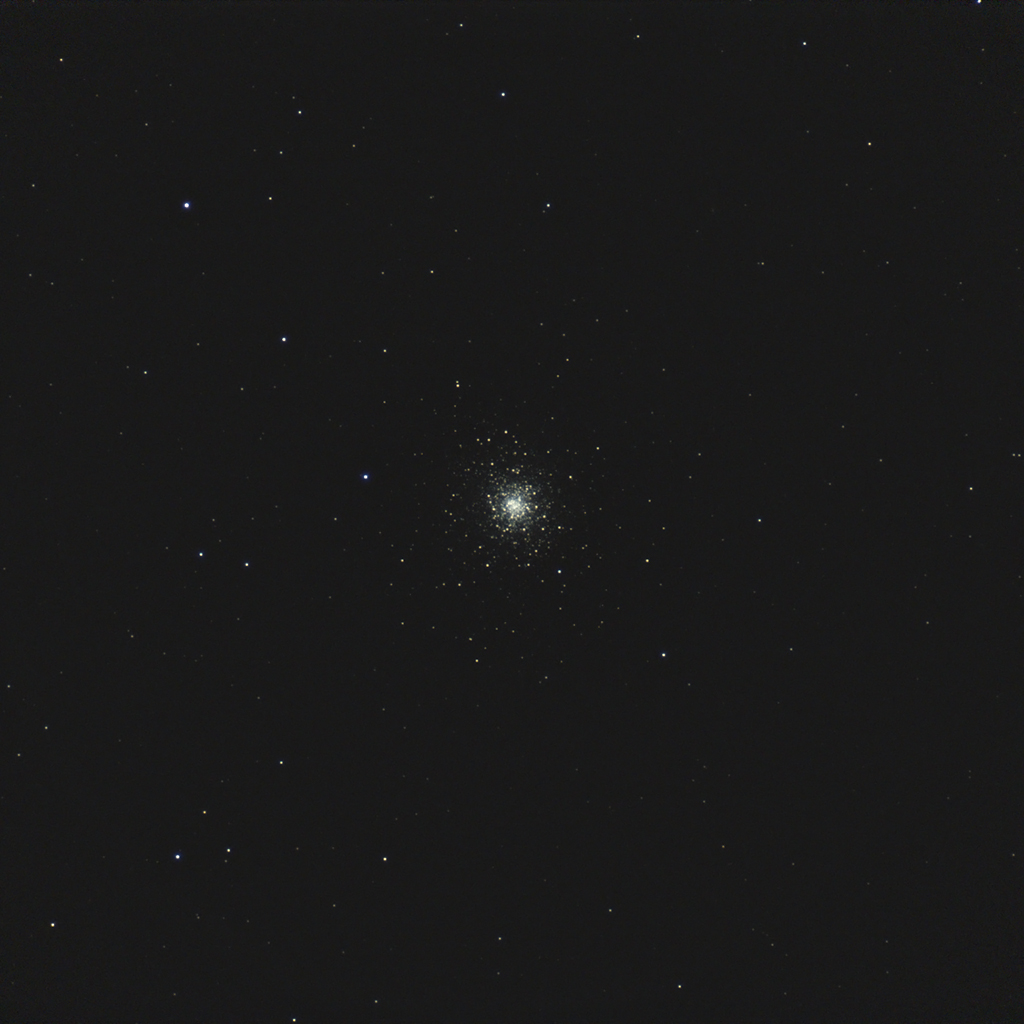
Telescope: Unitron 510 5” f/16 refractor, Atlas EQ-G
Camera: Canon EOS Ra full frame DSLR
Filter: 2” ZWO IR Cut Filter
Guide scope: Williams Optics 50mm Guidescope, ASI290MM, PHD
Exposure: 16x45sec, ISO 1600, saved as RAW
Darks: Internal (Long Exposure Noise Reduction)
Flats: 32×1/10s sky flats taken at dusk
Average Light Pollution: Bortle 8, poor transparency, haze, smoke
Lensed Sky Quality Meter: 18.3 mag/arc-sec^2
Stacking: Mean with a 1-sigma clip
White Balance: Nebulosity Automatic
Software: Backyard EOS, Deepsky Stacker, Nebulosity, Photoshop
M92 is the ‘other’ globular cluster in Hercules. M92 lies to the northeast of the popular M13 globular cluster in a relatively lonely patch of sky making it a bit harder to locate, but well worth the effort. Interestingly, M92 is listed as being fainter than M13 (Mv 6.4 for M92 vs. 5.8 for M13), but I find the core of M92 to be a tad brighter than M13. This is likely the result the apparent size of M13 being larger than M92 giving M13 a higher total integrated brightness.
This is the first of 5 test images taken with my Unitron 510. The field showed a surprising amount of vignetting, so this image was cropped square to fit within the region that could be corrected with flats. This issue was later traced to a baffle in the draw tube. When this was removed the telescope easily covered the entire full frame.
M92 is currently placed very high in the northeast as the sky darkens. (Photo credit; John Graham, 7/14/2023)
Recent Comments